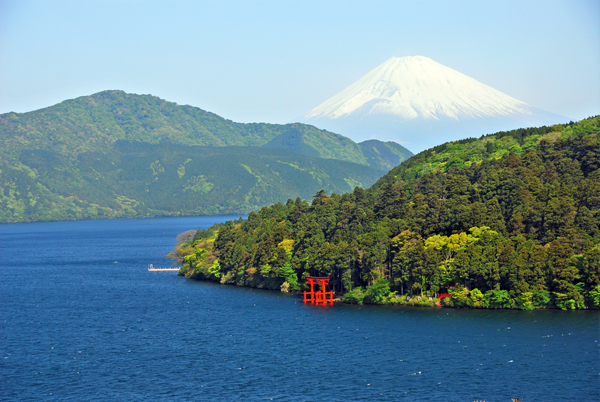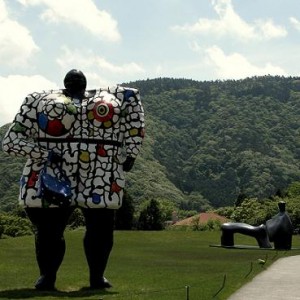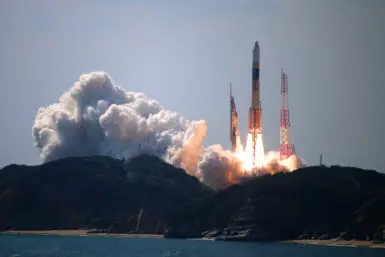With therapeutic hot springs, fascinating museums and stunning views of Mt. Fuji, Hakone justifies its position as one of the most popular tourist destinations in the country.
The designated national park has been attracting a large number of travellers since the Meiji era with a natural beauty which captivates visitors from all walks of life. Just an 85 minute train ride from Odakyu Shinjuku station on the ‘Romance Car’ limited express, a day trip is possible, however with so much to see and do it is worth spending at least a couple of days there to fully appreciate the allure of the mountains which surround this enchanting little town.
Of the famous ‘17 Hakone Springs’, Yumoto is the oldest, dating back to the Nara period (AD 710 – 794). The water in this area is said to help treat rheumatism, high blood pressure and skin diseases – and the word is out. The area can get busy but you will be spoilt for choice, with a number of hotels, ryokans and day spas with onsen facilities spread throughout the area.
Tenzan Tohji-kyo, a short shuttle bus ride from Hakone-Yumoto station, is a charming resort in the hills next to a river, with baths which vary in temperature – from tepid to extremely hot. Most of them are outside, giving guests the opportunity to feel at one with nature while experiencing their holistic benefits.
For a more interesting, albeit less relaxing bathing experience, try Kowakien Yunessun. With 25 ‘water attractions’, this is more of an aquatic amusement park than a hot spring resort. It is full of themed pools and there are even baths filled with coffee, red wine, sake and chocolate – quite what the benefits are it is unclear, but surely they are worth a try?
You don’t want to get too shriveled by your soak, so check out the sights. Hakone is a place blessed with scenery which changes spectacularly with the seasons. One of the most famous spots is Lake Ashi. There are a number of pleasure boats and ferries on the lake but for the true taste of ‘eccentric’ Japanese tourism, travel in buccaneering style on one of the four replica pirate ships.
The Hakone Free Pass (5,000 yen for a two-day adult pass) can be used for the boats as well as the Hakone Ropeway, which gives panoramic views of the striking Owakudani (the Great Boiling Valley) crater. A number of active steam vents and bubbling pools give off a sulphuric stench, perhaps added to by the black eggs, cooked on the mountainside, which are said to add seven years to your life.
Up the mountain railway, the Tozan Line, is the world class Hakone Open-Air Museum, near Chokoku-no-mori station. A place where nature meets art, the breathtaking grounds feature over 100 sculptures and works from esteemed artists such as Henry Moore, Auguste Rodin and Joan Miro. There is also a Picasso Pavilion and Picture Gallery as well as a 20-metre footbath – so you don’t forget you are in onsen territory while taking in the artworks.
Other museums of note in Hakone include the huge Pola Museum of Art, the Venetian Glass Museum, the Lalique Museum, displaying the work of acclaimed glass and jewellery artist Rene Lalique and the Narukawa Museum of Art, which is located on a hill overlooking Lake Ashi.
You would need a week to visit all of them and with so much to do in the area, Hakone is worth visiting time and time again.
By Matthew Hernon











